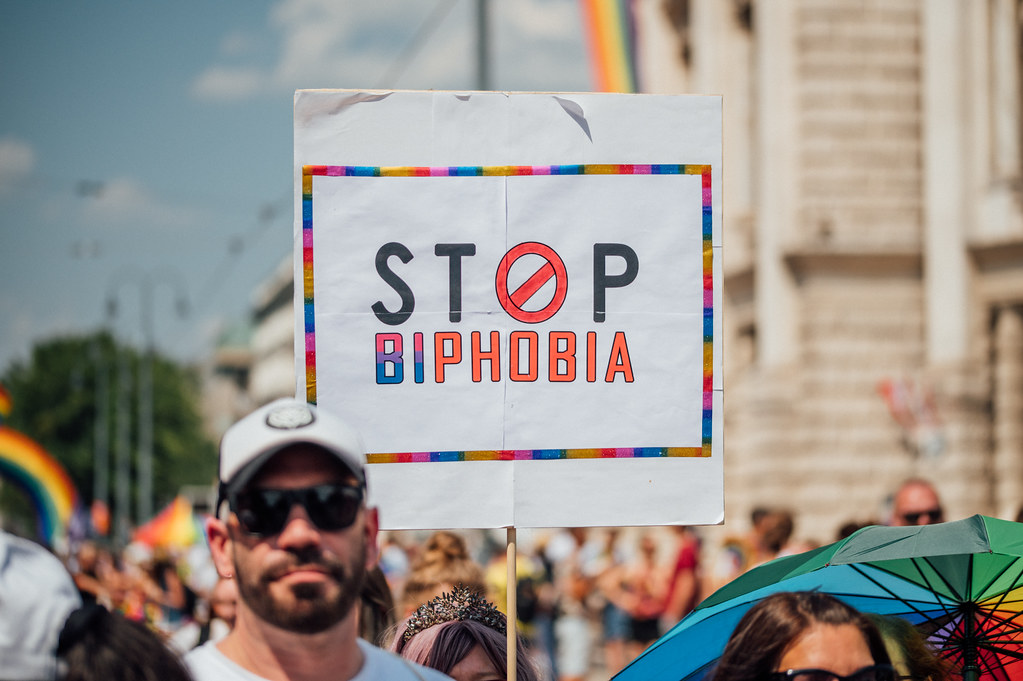
By Skye Sheehy
If you have attended a liberal arts college, looked on the internet, or just left your room, there’s a good chance you’ve heard of bisexuality. Maybe you identify as bisexual yourself, like 57% of the LGBTQ+ community does. Bisexuality is defined as the capacity to be attracted to more than one gender. While this may seem straightforward (no pun intended), bisexual people face a unique form of discrimination both within and outside the queer community: biphobia. Biphobia is an aversion toward bisexuality or people who identify as bisexual, and appears in stereotypes, prejudices and erasure of bisexuality as a valid identity, all of which can be extremely detrimental. According to the American Psychiatric Association, bisexuals have higher rates of depression and anxiety, suicide, addiction and poverty compared to heterosexual, gay and lesbian individuals. The Human Rights Campaign explained these statistics, finding that there is a lack of support for bisexuals within the LGBTQ+ community. For such a large subpopulation within the LGBTQ+ community, why is biphobia so prevalent, and how can we say “bye” to this discrimination?
Bisexuality is often contested both inside and outside the queer community as a transitional label, a phase, a pit stop en route to being gay or lesbian, rather than a separate identity. This is commonly propagated in pop culture. Carrie Bradshaw from 1990s and 2000s classic “Sex and The City” joked that bisexuality is “just a layover on the way to Gay Town.” Nick Nelson in Netflix’s “Heartstopper” constantly has to reiterate throughout the series that he’s “bi, actually.” In addition, the capacity for attraction to multiple genders is sometimes interpreted as a lack of commitment in relationships. Rio Veradonir of Bi.org, shared online that her bisexuality has made it difficult to find a trustful partner: “I have had both men and women turn me down as a potential partner simply because they were disgusted at the thought of me having had sexual relations with one or another sex in the past.” According to a 2017 study by Critical Public Health, bisexual people can feel pressured to engage in relationships or interactions with both sexes equally in order to provide ongoing ‘proof’ of their bisexuality.
This coincides with the stereotype that bisexual people’s attraction to multiple genders is an indicator — or excuse for — promiscuity. Nora Hess (‘28) says, “I’ve had it said in multiple ways, and I’ve had to explain that there is that stigma and that it is harmful to a greater community to say that kind of thing.” Hess adds that trying not to potentially feed into the stereotype has sometimes impacted the way she acts around people. While this stereotype is often enacted in jest, the consequences of this stereotype can be serious. Sixty-one percent of cisgender bisexual women in the U.S. have experienced intimate partner violence, including rape, physical abuse and stalking, more than any other group in the LGBTQ+ community.
The dual nature of bisexuality can prompt misconceptions about the amount of ‘straight’ or ‘gay’ a bi person is. Like all sexualities, bisexuality is a spectrum, but the possibility to live as ‘straight-passing’ can create barriers within the queer community. According to Gender and Queer Studies Professor Laura Krughoff, these feelings can stem specifically from older members of the community who lived through the more rampant homophobia of the 1970s and 80s and the AIDS epidemic, who may “perceive bi people as having a choice about whether to align and and receive the harm that comes from that, or make use of the fact that they can be closer to the power of the patriarchy.” She adds that members of this generation who have seen bi people in heterosexual relationships for decades, feel a sense of, “like, if you’ve been partnered to a person for 30 years, like, when does it wear off?” It can be difficult for bisexual people to find the balance they feel they need to present in order to reaffirm their identity. Hess confirms this, saying it was difficult to find ‘flow’ of her sexuality, going through phases of liking more women than men and questioning herself. Still, Hess tries to remember that “it’s not 50/50, it’s a spectrum.”
So how can we alleviate the stress and struggle of biphobia? “My go-to is to ask, ‘who is served?’” Dr. Krughoff advises. “When gay or lesbian people are talking bad about, or making jokes about or have stereotypes about bi people, who is that serving? Because it’s not serving queer people, when we divide ourselves.” Queerness is not an exclusive club, or a special table you should have to fight for a seat at; it’s a community with a beautiful variety of experiences, and excluding or deriding people will not benefit anyone. As anti-LGBTQ+ attitudes stemming from our current political climate cast a shadow over our social sphere, it is more important than ever for queer people and allies to lift each other up and create a strong support system, one where no one is left behind.
